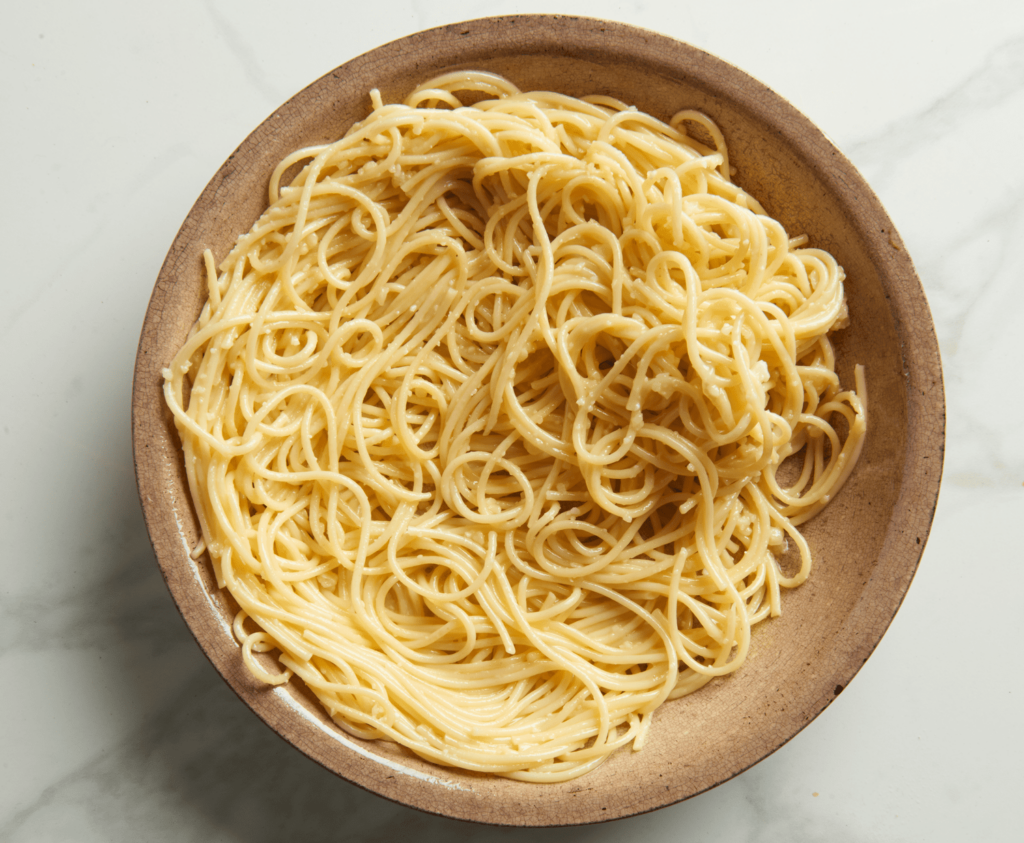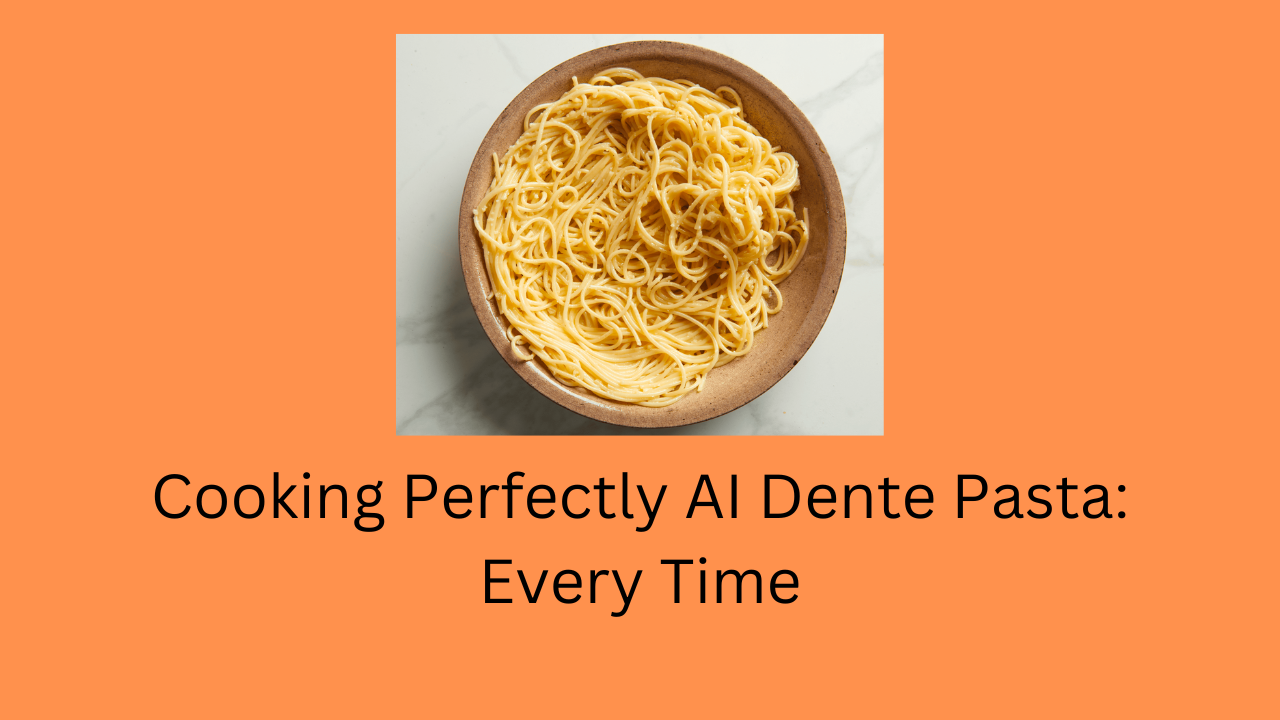Cooking perfectly al dente pasta: Every time- Have you ever dreamt of restaurant-quality pasta at home? The kind that’s tender yet firm, perfectly cooked through while retaining a satisfying bite. The secret lies in achieving that elusive al dente state, the Italian term meaning “to the tooth.” This seemingly simple concept can often feel like a guessing game, leaving you with either mushy disappointment or undercooked frustration.
But fear not, pasta enthusiasts! We’re here to demystify the art of al dente and equip you with the knowledge and tools to consistently cook perfect pasta every single time. So, grab your favorite noodles, dust off your pot, and get ready to unleash your inner pasta maestro.
While achieving al dente may sound intimidating, it boils down (pun intended) to a few key principles and simple techniques. By understanding these, you’ll transform your pasta game from a game of chance to a reliable recipe for success. This section will delve into the secrets behind perfectly cooked pasta, exploring the importance of water, salt, and cooking time while providing valuable tips and tricks to ensure consistent al dente perfection.
Health Benefits of Cooking perfectly Al Dente Pasta
While achieving the perfect al dente texture elevates your pasta experience, the benefits extend beyond pure culinary satisfaction. Cooking pasta al dente offers several health advantages:
1. Slower Blood Sugar Rise:
Al dente pasta has a lower glycemic index (GI) compared to overcooked pasta. This means it releases glucose (sugar) into your bloodstream at a slower rate, helping to regulate blood sugar levels and preventing spikes that can lead to energy crashes and increased hunger.
2. Improved Digestion:
The slightly firm texture of al dente pasta requires more chewing, which promotes better digestion by allowing your body to break down the carbohydrates gradually. This can also lead to a feeling of satiety that lasts longer, preventing overeating.
3. Increased Fiber Retention:
Al dente pasta retains more resistant starch, a type of fiber that resists digestion in the small intestine. This fiber reaches the large intestine, where it feeds gut bacteria and contributes to improved gut health and digestion.
4. Potential for Weight Management:
While pasta itself isn’t inherently unhealthy, overcooked pasta can contribute to higher calorie intake due to its higher glycemic index and increased digestibility. Choosing al dente pasta can help you manage your calorie intake more effectively.
5. Enhanced Nutrient Absorption:
Overcooking pasta can leach out some of its vitamins and minerals. Cooking it al dente helps to preserve these valuable nutrients, allowing your body to absorb them more effectively.
Remember:
- These benefits are most pronounced when combined with healthy toppings and portion control.
- Choosing whole-wheat pasta can further enhance the nutritional value of your pasta dish by providing additional fiber and nutrients.
By embracing the art of al dente cooking, you can enjoy your favorite pasta dishes not just for their deliciousness, but also for the healthier benefits that come with it. So, perfect your cooking technique and savor the full flavor and health potential of every perfectly cooked al dente bite.
Al Dente Mastery: A Step-by-Step Guide to Perfect Pasta Every Time

Now that you’ve explored the magic of al dente and its health benefits, let’s dive into the practical steps to achieve this coveted texture consistently:
Ingredients:
- Pasta: Choose your favorite shape and variety. High-quality pasta often cooks more evenly, contributing to better al dente results.
- Water: This is your cooking medium, so use fresh, clean water for the best results.
- Salt: Adds flavor and elevates the taste of the pasta.
- Optional: Olive oil (a few drops) can prevent sticking during the early stages of cooking.
Equipment:
- Large pot: Ensure it’s big enough to comfortably hold your chosen pasta amount and allow for water movement during boiling.
- Colander: For draining the cooked pasta.
- Kitchen timer: Crucial for keeping track of cooking time and achieving al dente perfection.
Instructions:
- Bring water to a rolling boil: Fill your pot with enough water to generously cover the pasta (around 4-5 quarts for 1 pound of pasta). Add a generous amount of salt (approximately 1 tablespoon per 4 quarts of water). Aim for a rolling boil, where the water bubbles vigorously and continuously throughout the pot.
- Add pasta and a touch of oil (optional): Once the water reaches a rolling boil, carefully add your pasta. If desired, add a few drops of olive oil to prevent early sticking, especially for long, thin pasta like spaghetti.
- Cook according to package instructions, minus 1-2 minutes: While the pasta cooks, stir occasionally to prevent sticking. However, resist the urge to over-stir, as this can release starch and make the pasta sticky. Refer to the cooking time on the pasta package, but subtract 1-2 minutes from that time. This is because you’ll be checking for doneness before the listed time is up.
- The “doneness test”: After subtracting the specified time from the package instructions, start tasting the pasta a minute or two before that time elapses. Use a fork to scoop out a single strand and bite into it. It should be tender but still have a slight bite or “firmness to the tooth” – that’s the al dente texture!
- Drain immediately: Once the pasta reaches al dente, immediately drain it in a colander. You can run cool water over the pasta briefly to stop the cooking process and prevent overcooking.
- Toss and enjoy: Transfer the drained pasta directly to your sauce or serving dish. Toss it gently with your sauce or desired ingredients, and enjoy your perfectly cooked al dente pasta!
Pro Tips:
- Reserve some pasta water before draining. This starchy water can be used to thin out your sauce if it becomes too thick, creating a smooth and flavorful consistency.
- Don’t rinse the pasta after draining. This removes the starchy residue that helps the sauce adhere to the pasta.
- If cooking different pasta shapes together, choose varieties with similar cooking times to ensure even doneness.
By following these simple steps and mastering the art of al dente, you can elevate your pasta dishes and enjoy the full flavor and texture that this cooking method offers. Remember, practice makes perfect, so keep experimenting and discovering the joy of perfectly cooked pasta.
Conclusion
The journey to mastering al dente pasta transcends simply achieving a specific texture. It’s about unlocking the full potential of your favorite pasta dishes, elevating them from a simple meal to a culinary experience that is both delicious and health-conscious.
Recap:
- You’ve learned the importance of al dente, not just for taste, but for improved digestion, controlled blood sugar, and better nutrient absorption.
- You’ve discovered the simple steps and techniques needed to consistently cook pasta al dente every time, transforming your pasta game from chance to mastery.
- You’ve gained valuable pro tips to ensure smooth and flavorful results.
Beyond the techniques:
Remember, cooking is a creative journey. Utilize your newfound al dente expertise to experiment with different pasta shapes, sauces, and ingredients. Explore new flavor combinations and discover your own signature pasta masterpieces.
The next time you crave pasta, embrace the art of al dente. With a few key principles and a touch of practice, you’ll be well on your way to enjoying restaurant-quality pasta dishes in the comfort of your own kitchen. So, grab your pot, choose your favorite pasta, and embark on your culinary journey of al dente perfection.

